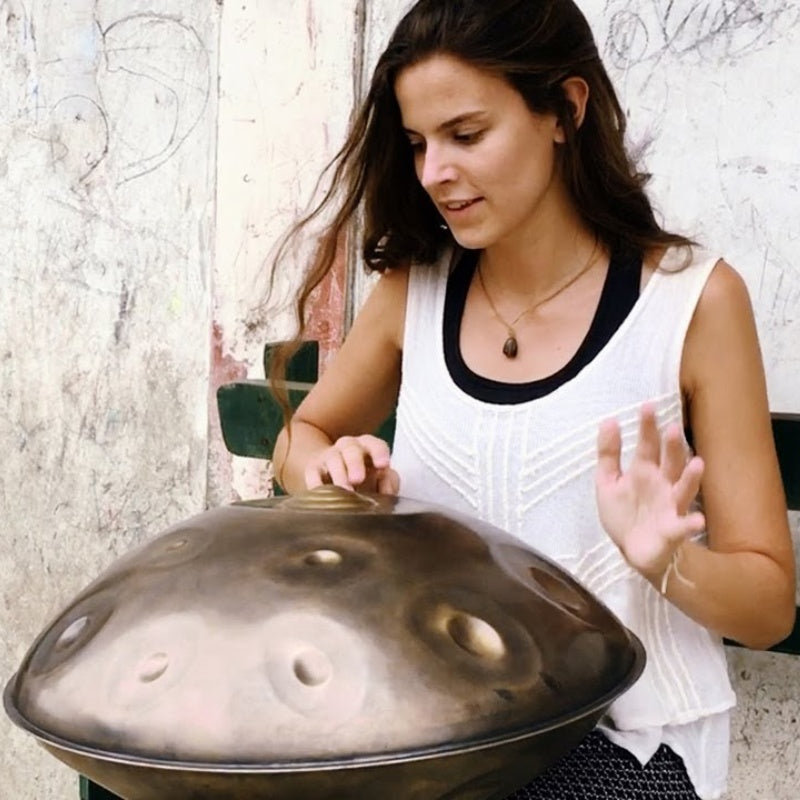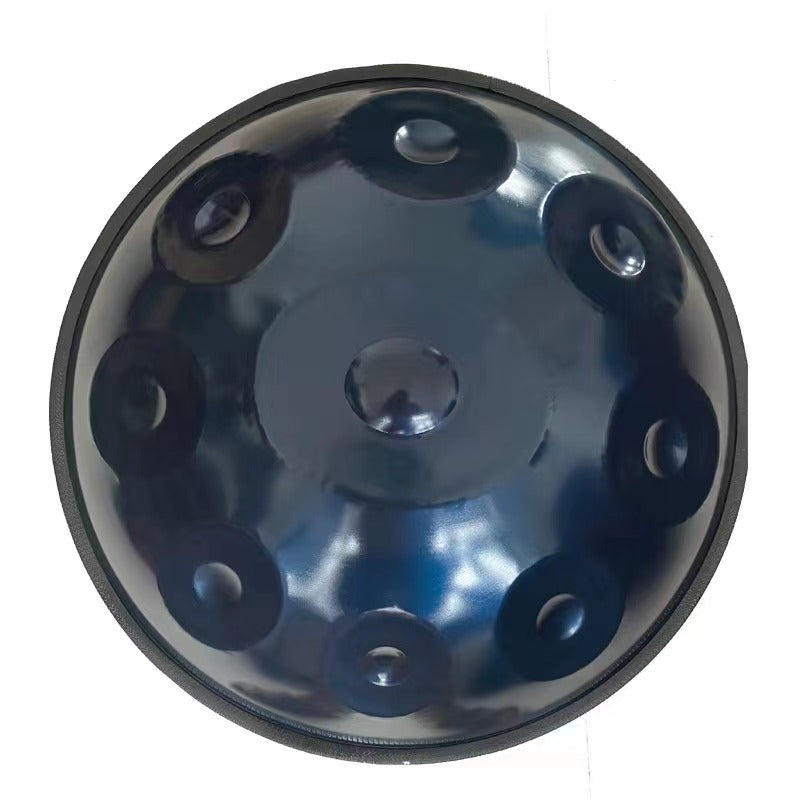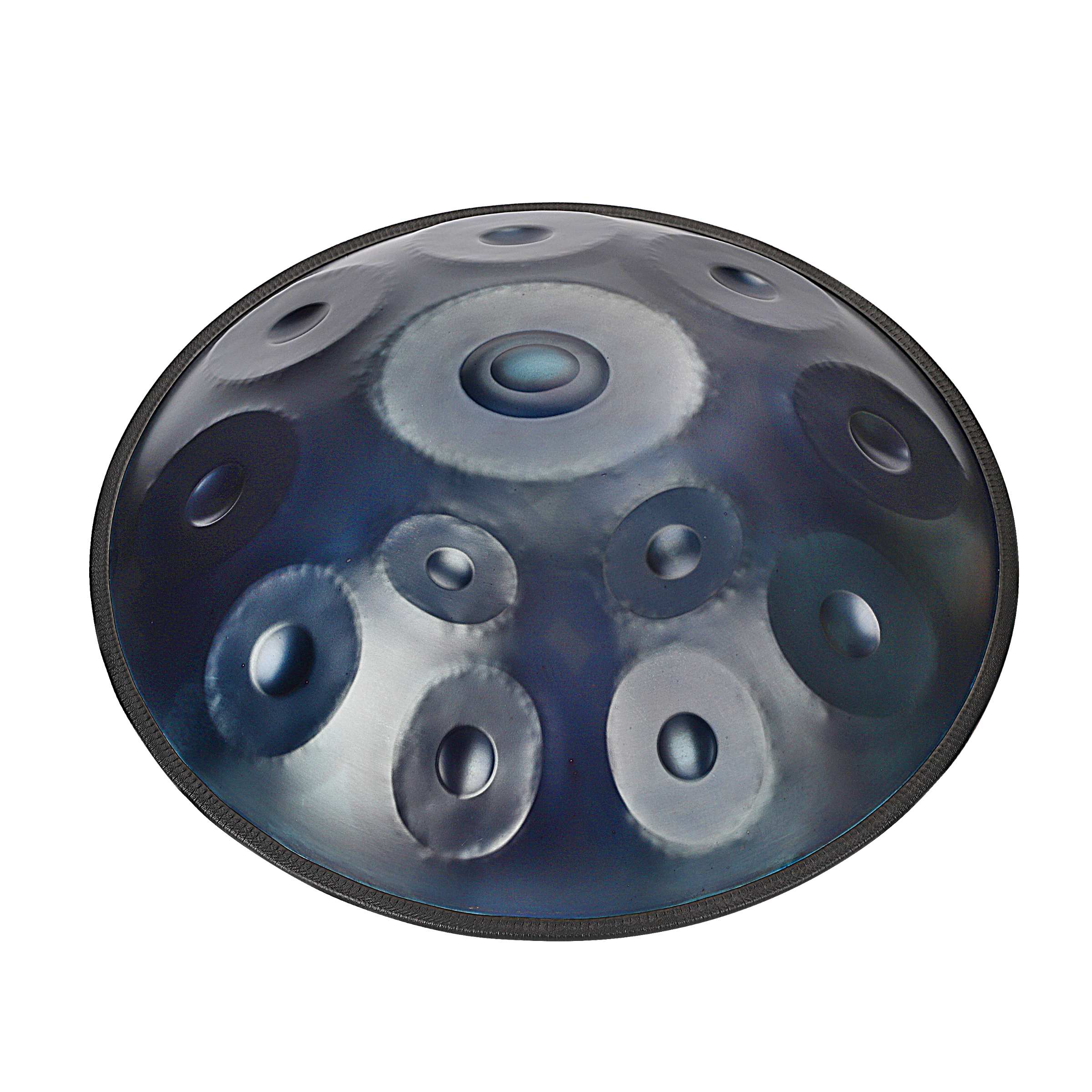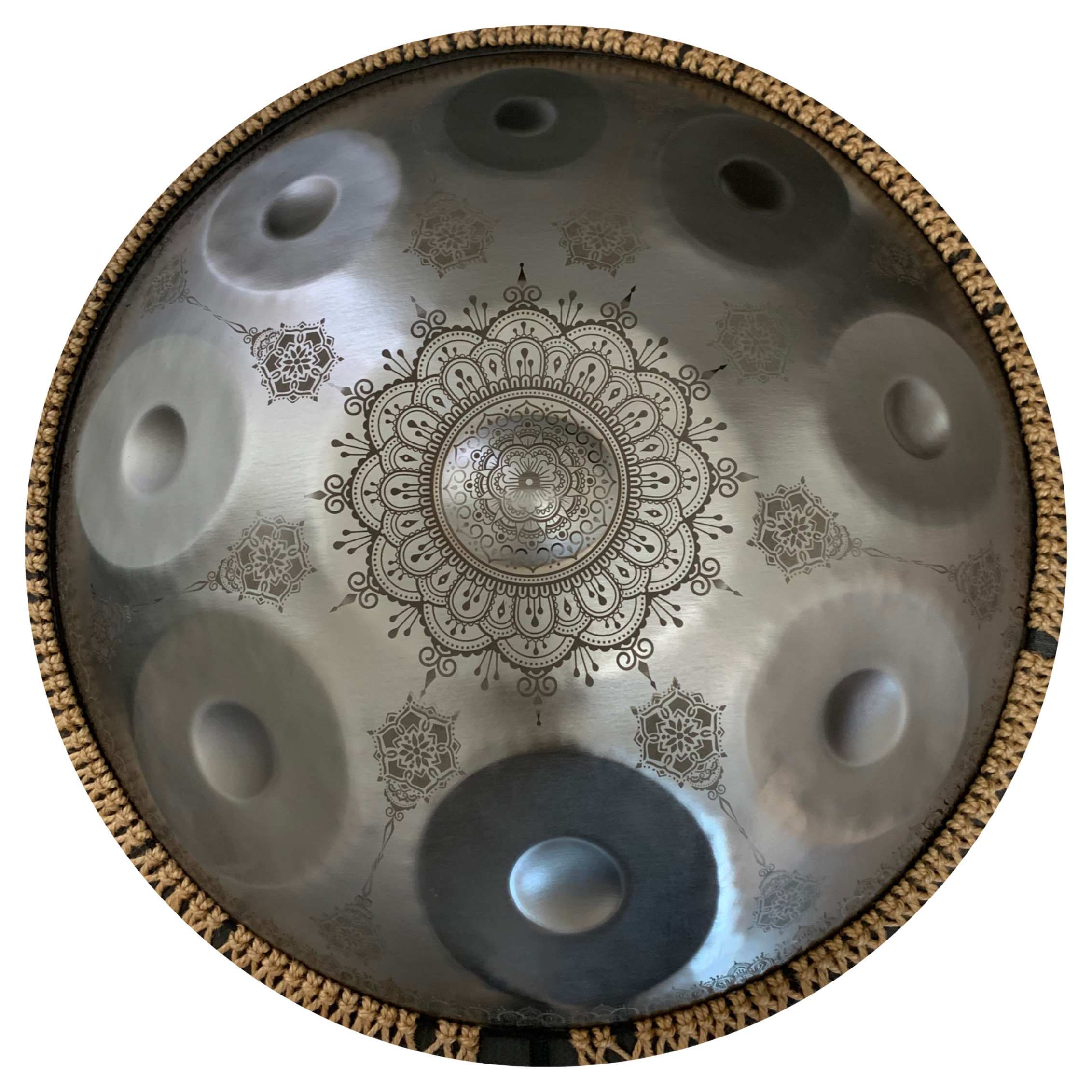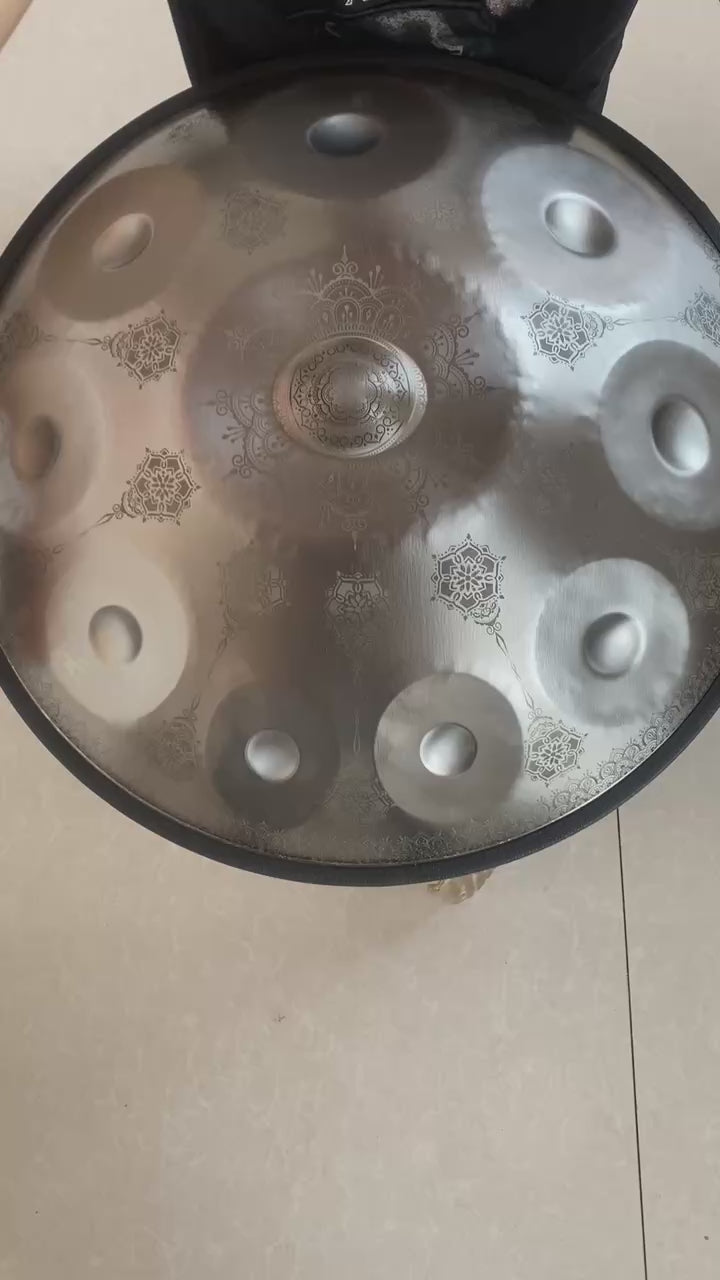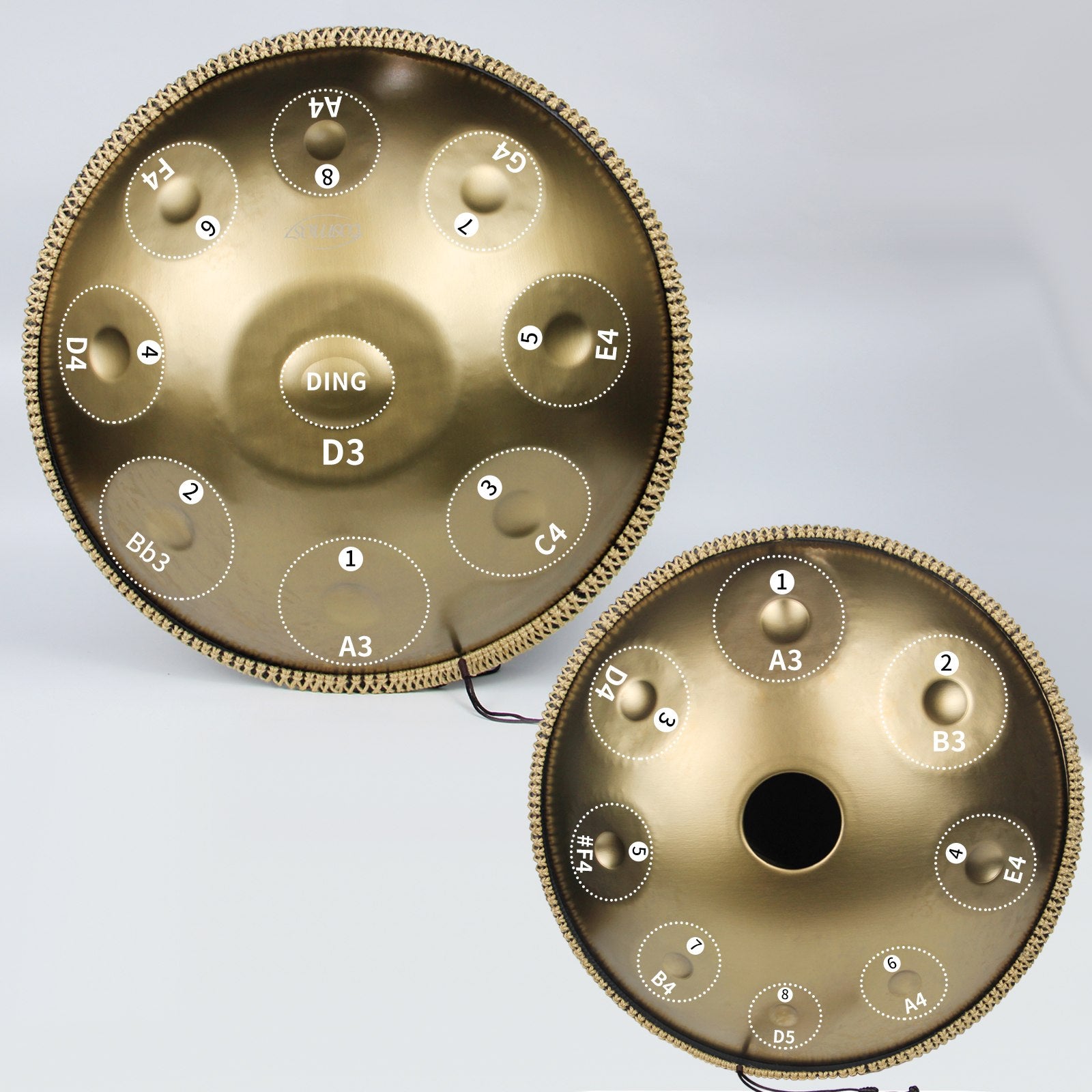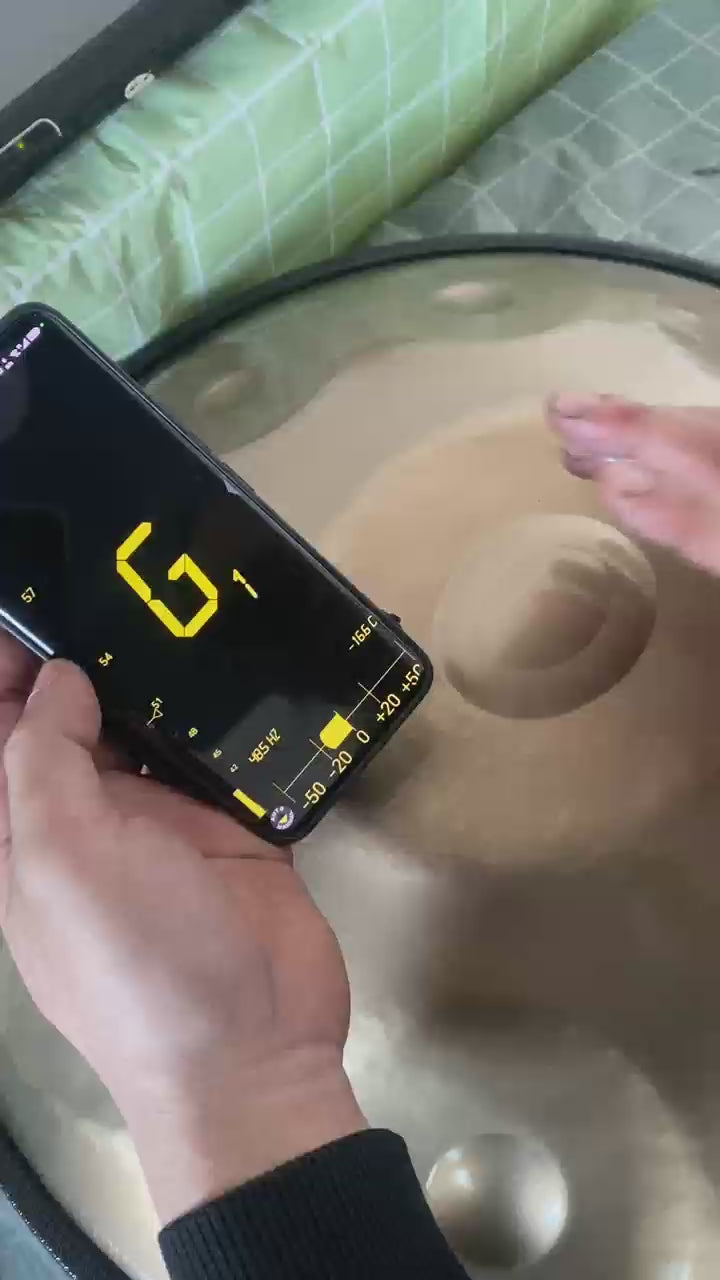The handpan, the beautiful musical instrument that has an enchanting and rather unusual timbre that appeals to both audiences and performers globally, has become popular. Introduced in the early 2000s by the PANArt Steelpan Manufacturer company in Switzerland, the handpan is still a relatively young percussion instrument, yet it has a firm audience base. Here is the complete beginner's guide for the handpan, including its history, parts of the handpan, how to play the handpan, and how to buy your first handpan.
What is a Handpan?
A handpan is defined as a type of steel that is played using the hands, and it is of percussion kind and creates both rhythm and melody. The product is made from two circular discs of metal, which are then soldered together automatically to form a convex surface. It has several tone fields, or notes, all around in circular form, a central note known as the "Ding"; the tone fields are all tuned to specific pitches and, when struck, produce harmonious melodies and rhythmical patterns.

History and Evolution
Dating back to the origins of the Hang by PANArt in the year 2000, the handpan has evolved. Thus, the uniqueness of the tone and design of the Hang caught the attention of the public, resulting in the birth of different handpan models from other manufacturers. The mentioned contemporary handpan is incredibly popular today; lots of artisans produce handpan instruments in various scales, materials, and perhaps designs. Although the handpan was invented in the recent past, it has now spread its wings in the musical chants of type, such as new-age music, to even more conventional rhythmic music.
Anatomy of the Handpan
Knowledge, the construction specification, and the design of a hand pan are important in order to play and even take care of the hand pan. A typical handpan comprises:
Shells: They are called medical steel; it is merged out of several thin layers of nitrided steel or stainless steel, shaping the top and bottom spherical layers.
Ding: The middle note, on the center part of the shell which is usually louder and deeper in pitch.
Tone Fields: The areas around the Ding, every single one of which is set to a different pitch.
Gu: The opening in the bottom shell, through which some help to project the sound.
Playing Techniques
The handpan is indeed a fascinating musical instrument that is capable of producing various techniques for the expression of different feelings. Here are some fundamental techniques for beginners:
Strike Technique: The simplest in that to execute the tone fields, one has to use fingers or the palm to beat them. The concept here is to create a clear sound and vibrate the instrument to give it a good, clear base without hitting the keys too hard.
Dampening: This concerned switching off the vibration of the note once it has been played to reduce sustain and produce short-spaced notes. Fingers or the palm, softly touching the note, can do this.
Slap Technique: This is carried out by striking the note with slight and sudden movements so that there is a metallic sound, commonly in order to introduce developments in the rhythm and dynamics.
Harmonics: The physical technique of lightly dampening the strings at a certain point at the time of strumming it to get the harmonic bell-like tone. Doing this results in adding a very appealing, gentle touch to the creation of the music.
Choosing Your First Handpan
Choosing the first handpan can be very enjoyable but, at the same time, very challenging.
Scale: Handpans are produced in several scales, the different scales provide different modes and colors for music. The most preferable scales for new students are D Minor, C Major, and A Minor. Notably, the D Minor scale is preferred in great measure and generously exhibited in the instructional videos and tutorials.
Number of Notes: A beginner can choose a handpan containing nine notes, one of which is the Ding. This configuration offers a nice split between the easy and the wide, for want of a better term.
Material: There are mainly two types of handpans; the nitrided steel handpans and the stainless steel handpans. C-steel has a shorter sustain than nitrided steel and thus sounds more rhythmic; stainless steel, of course, sounds warmer and has a longer sustain than nitrided steel. Here the decision lies in the personal discretion and type of the gameplay.
Quality and Craftsmanship: It is advisable to buy handpans from makers who offer precise and accurate handpans since this is the most sensitive part of the music. Reviews should be read, asking friends who have played a certain instrument before and, if possible, trying different instruments out oneself can be helpful.
Maintenance and Care
Avoid Moisture: As much as possible, avoid exposing your handpan to moisture that will make it rust. This should be done weekly to reduce the build-up of dew and apply a thin coat of oil.
Handle with Care: To be safe it is advisable that one practices maximum care with their handpan and avoid cases of scratching or putting indents on it. Store the equipment in a padded bag or case and this will also be the same case when it is time to transport the equipment.
Clean Regularly: That is why after every use of the handpan, it should be wiped with a soft cloth so as to remove the fingerprints and oils from your hands. A method of periodic cleaning of the instrument with an appropriate cleaner, which, according to the manufacturer's recommendations, should be used.For more maintenance check out.
Resources for Learning
Online Tutorials: There are lots of tutorials on the Internet, on such sites as YouTube, which contain videos where one can learn the basics and complex methods of playing.
Workshops and Classes: Playing in instrumental groups, as well as participating in workshops and classes, one can get a practical lesson and recommendations from the best performers.
Community Forums: People can find informative and supportive discussions and receive contacts within the handpan community from the forums and communities of the social networks.
The Musical Journey
Handpan playing is an exciting process and is based on music and art, combined with some elements of physical skill. Gradually, you will learn the possibility of the instrument and, most importantly, the pleasure of producing music that is compatible with your feelings and ideas. Professionalism requires that one engages in the given activities often as a way of achieving proficiency. Perform shorter rehearsals and then expand the practice time to create muscular strength and welded skills. Other handpan players' music can also be listened to or analyzed as they can offer inspiration or share new concepts for playing.
Conclusion
The handpan is a unique instrument that is appreciated by musicians of all levels, from the novices to the professional ones. The ringing sound that it creates, in addition to the physical contact with one's hands that is required for the playing of this instrument, makes it very appealing and satisfying to try out. If you are aware of the facts regarding its development, composition, and how to properly play the handpan, as well as picking the right equipment and properly caring for such, then you are ready to start your musical adventure.
Whether you are attracted to the handpan because of the relaxing instrument, the rhythmic instrument, or the tune, this guide will help you get the basic and necessary information you need to begin your handpan experience. Welcome the incredible art of handpans, and build into the world of music more tunes of this beautiful instrument.

